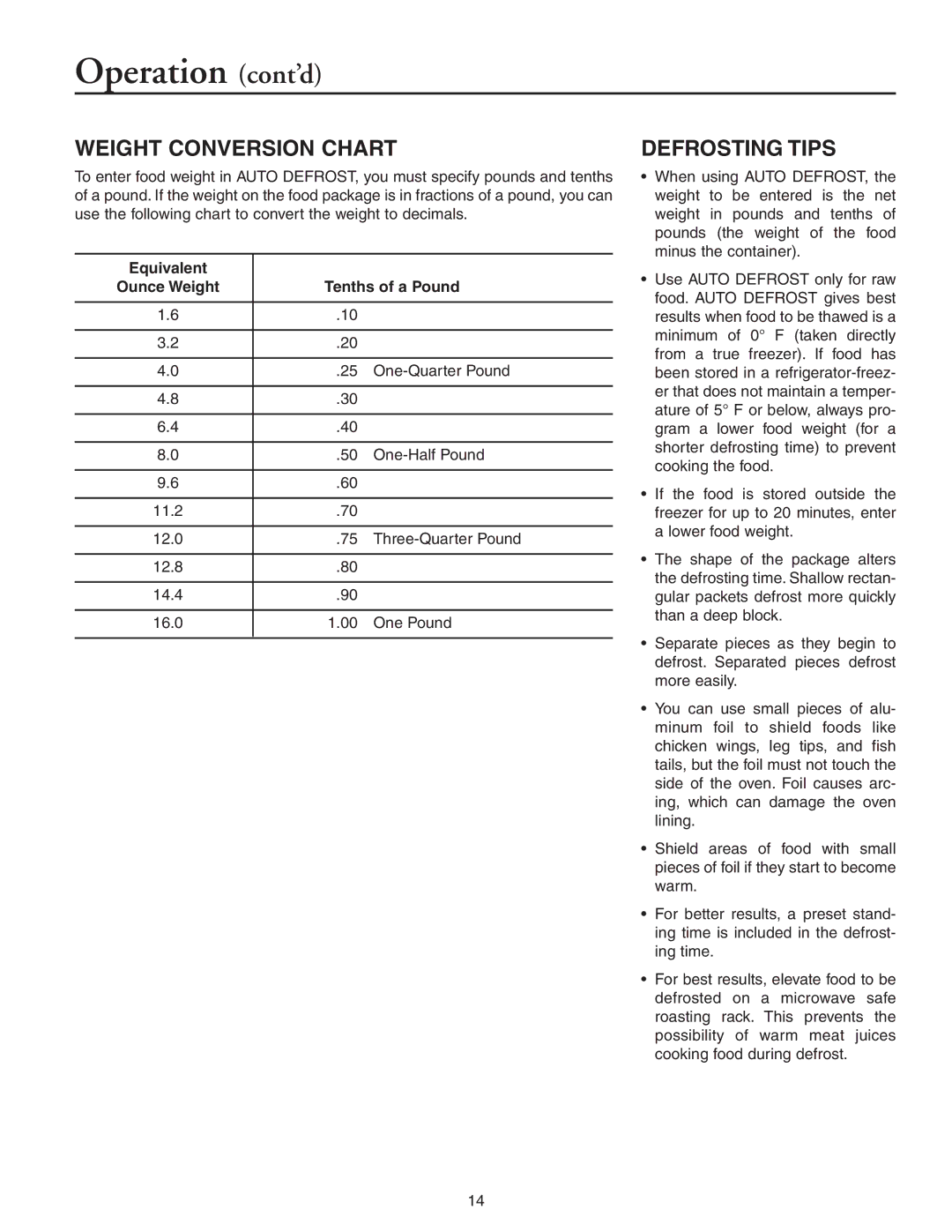Operation (cont’d)
WEIGHT CONVERSION CHART
To enter food weight in AUTO DEFROST, you must specify pounds and tenths of a pound. If the weight on the food package is in fractions of a pound, you can use the following chart to convert the weight to decimals.
Equivalent |
|
|
Ounce Weight | Tenths of a Pound | |
|
|
|
1.6 | .10 |
|
|
|
|
3.2 | .20 |
|
|
|
|
4.0 | .25 | |
|
|
|
4.8 | .30 |
|
|
|
|
6.4 | .40 |
|
|
|
|
8.0 | .50 | |
|
|
|
9.6 | .60 |
|
|
|
|
11.2 | .70 |
|
|
|
|
12.0 | .75 | |
|
|
|
12.8 | .80 |
|
|
|
|
14.4 | .90 |
|
|
|
|
16.0 | 1.00 | One Pound |
|
|
|
DEFROSTING TIPS
•When using AUTO DEFROST, the weight to be entered is the net weight in pounds and tenths of pounds (the weight of the food minus the container).
•Use AUTO DEFROST only for raw food. AUTO DEFROST gives best results when food to be thawed is a minimum of 0° F (taken directly from a true freezer). If food has been stored in a
•If the food is stored outside the freezer for up to 20 minutes, enter a lower food weight.
•The shape of the package alters the defrosting time. Shallow rectan- gular packets defrost more quickly than a deep block.
•Separate pieces as they begin to defrost. Separated pieces defrost more easily.
•You can use small pieces of alu- minum foil to shield foods like chicken wings, leg tips, and fish tails, but the foil must not touch the side of the oven. Foil causes arc- ing, which can damage the oven lining.
•Shield areas of food with small pieces of foil if they start to become warm.
•For better results, a preset stand- ing time is included in the defrost- ing time.
•For best results, elevate food to be defrosted on a microwave safe roasting rack. This prevents the possibility of warm meat juices cooking food during defrost.
14
